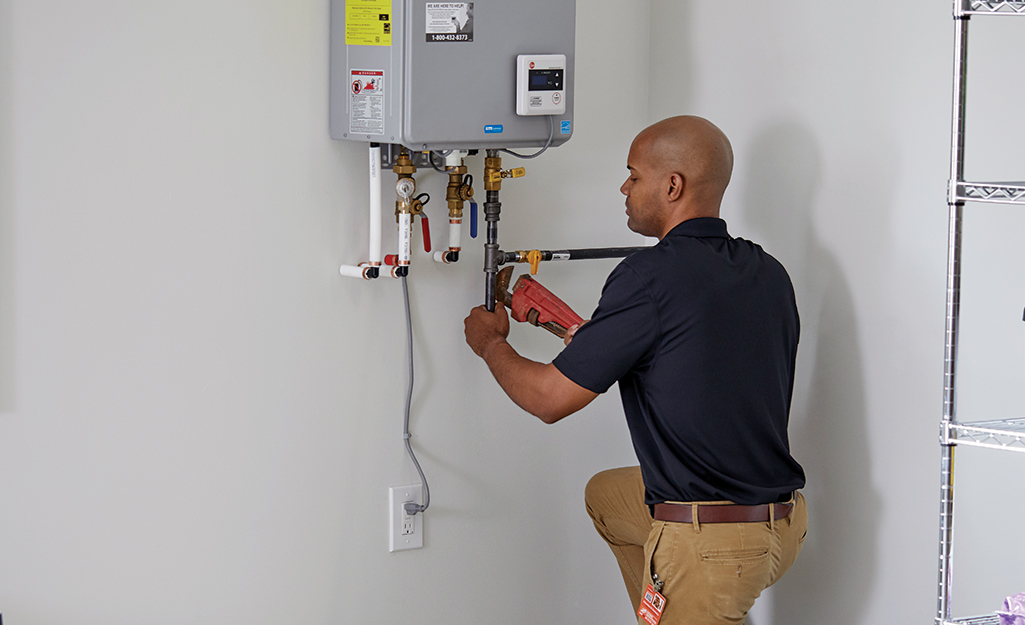Each person will have their personal conception involving Water Heater Maintenance Tips You Can't Afford to Forget.

Warm water is important for everyday comfort, whether it's for a rejuvenating shower or washing meals. To ensure your warm water system runs efficiently and lasts longer, normal maintenance is vital. This short article gives useful pointers and insights on just how to keep your home's hot water system to prevent disturbances and expensive fixings.
Introduction
Maintaining your home's warm water system could seem overwhelming, but with a couple of simple steps, you can guarantee it operates smoothly for several years to come. This guide covers every little thing from understanding your hot water system to do it yourself maintenance suggestions and knowing when to employ professional assistance.
Value of Maintaining Your Warm Water System
Regular maintenance not just expands the lifespan of your hot water system yet also ensures it operates effectively. Disregarding maintenance can result in lowered effectiveness, greater power bills, and even premature failing of the system.
Indicators Your Warm Water System Needs Maintenance
Understanding when your warm water system requires focus can prevent major problems. Look out for signs such as inconsistent water temperature level, odd sounds from the heating system, or rusty water.
Flushing the Water Heater
Flushing your water heater eliminates debris build-up, boosting performance and prolonging its life.
Checking and Replacing Anode Rods
Anode rods avoid rust inside the storage tank. Checking and changing them when worn is vital.
Facility Concerns Calling For Specialist Aid
Instances consist of significant leakages, electric troubles, or if your hot water heater is continually underperforming.
Regular Specialist Upkeep Perks
Specialist upkeep can consist of complete assessments, tune-ups, and guaranteeing conformity with security requirements.
Checking and Changing Temperature Settings
Adjusting the temperature level setups makes certain ideal performance and security.
DIY Tips for Maintenance
You can execute a number of maintenance tasks on your own to maintain your warm water system in top condition.
Looking for Leakages
On a regular basis check pipes and connections for leakages, as these can bring about water damages and higher bills.
Recognizing Your Warm Water System
Before diving into upkeep jobs, it's valuable to comprehend the basic parts of your warm water system. Usually, this includes the hot water heater itself, pipelines, anode rods, and temperature level controls.
Month-to-month Maintenance Tasks
Normal regular monthly checks can help capture minor concerns before they rise.
Checking Pressure Alleviation Valves
Checking the pressure safety valve guarantees it functions appropriately and stops excessive stress accumulation.
Insulating Pipelines
Protecting warm water pipelines reduces warmth loss and can save power.
When to Call an Expert
While DIY upkeep is useful, some issues need professional experience.
Final thought
Normal maintenance of your home's warm water system is vital for performance, durability, and cost financial savings. By following these ideas and knowing when to look for professional assistance, you can ensure a trusted supply of hot water without unanticipated disruptions.
How to Maintain an Instant Hot Water Heater
- Before tinkering with your hot water heater, make sure that it’s not powered on. You also have to turn off the main circuit breaker and shut off the main gas line to prevent accidents. Also turn off the water valves connected to your unit to prevent water from flowing into and out of the appliance.
- 2. When you’re done, you have to detach the purge valves’ caps. These look like the letter “T†and are situated on either side of the water valves. Doing so will release any pressure that has accumulated inside the valves while at the same time avoid hot water from shooting out and burning your skin.
- 3. When the purge valves’ caps are removed, you have to connect your hosing lines to the valves. Your unit should have come with three hoses but if it didn’t, you can purchase these things from any hardware or home repair shops. You can also get them from retail stores that sell water heating systems. Read the user’s manual and follow it to complete this task properly. When the hosing lines are connected, open the purge port’s valves.
- 4. You should never use harsh chemical cleaners or solutions when cleaning your unit. Make use of white vinegar instead. It should be undiluted and you’ll probably use about 2 gallons.
- 5. Now flush your water heater. This task should probably take about 40 minutes. We can’t give you specific directions for this because the procedure is carried out depending on the type, model and brand of your heater. With that being said, refer to the user’s manual.
- 6. When you’re done draining the unit, you have to turn off the purge port valves again. Remove the hosing lines that you earlier installed on each of the water valves. Put the valve caps (purge port) back in their respective places and be very careful so as not to damage the rubber discs that are found inside these caps.
- 7. Now that everything’s back in place, check your user’s manual again to find out how to reactivate your water heating system.
- 8. Once it is working, turn one of your hot water faucets on just to let air pass through the heater’s water supply pipes. Leave the tap on until water flows smoothly out of it.
https://www.orrplumbing.com/blog/2014/september/how-to-maintain-an-instant-hot-water-heater/

As a devoted reader about What Kind of Maintenance Do Water Heaters Need?, I thought sharing that piece of content was really useful. Are you aware of somebody who is excited by the topic? Feel free to share it. I love reading our article about How to Maintain a Hot Water Heater in a Few Simple Steps.
Book A Free Estimate
Comments on “Effective Techniques for Caring for Your Home's Hot Water System”